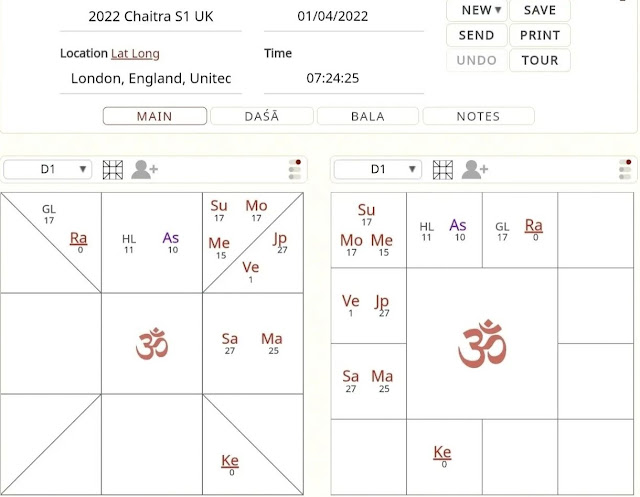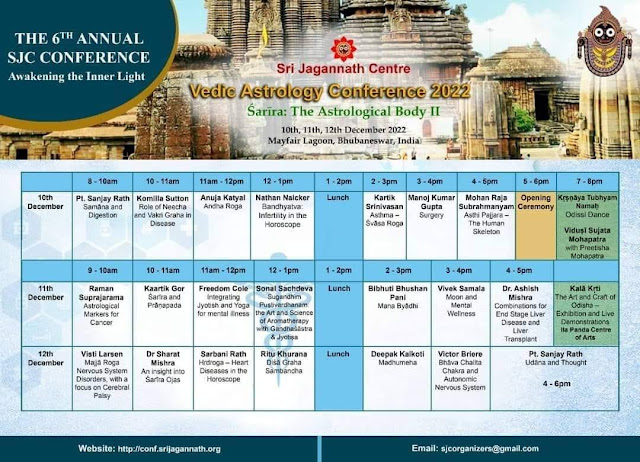Sattva In Jyotiṣa
"Our inequality materializes our upper class, vulgarizes our middle class, and brutalizes our lower class.” – Matthew Arnold, English Essayist (1822-1888).
It is difficult to find a solution to inequality (with consensus) because every mind perceives inequality differently. To find a real workable solution to inequality therefore wise men have prescribed all with firstly an equanimity within oneself.
And they called this state of equilibrium or equanimity Sattva, which naturally is the default state of everything as even the net flux of life is always in equilibrium. This is how Nature is.
What disturbs Sattva they called Rajas (restlessness) and Tamas (inertia). To give a simple example; Tamas is not acting when one should, Rajas is not stopping when one should, and Sattva is knowing when to act and equally knowing when to stop. Or rather it may be more proper to say that Rajas creates the perception of change, Tamas creates the perception of no change (or reduces change), and Sattva accepts and works with change as it is and as it is encountered.
From this point of view, the Cardinal signs are Rajas-affinitive, as they know when to start but dont always know when to stop. The Fixed signs are Tamas-affinitive, as they resist change. The Dual signs are Sattva-affinitive as they have the highest propensity for starting and stopping.
Each type of sign can all be very busy. There is a misconception that Rajas is high level of activity, Tamas is non-activity, and Sattva is like someone sitting in meditation. This is very incorrect view. Sattva is a controller and knows how and when to switch between the two other modes of operation Rajas and Tamas. Rajas and Tamas in equal portion create Sattva. Rajas may be very busy in creating many changes. Tamas may go through a huge amount of activity and energy expenditure to resist change. And Sattva retains and expends energy in equal portions in whatever circumstance. Tamas can be very self-focused, Rajas is concerned with itself in the presence of others, and Sattva is not self-focused at all but takes a view about all parties involved individually. Tamas is abandoning/rejecting, Rajas is acquisitive/dominating, and Sattva is balanced.
The Tamas graha are the malefics, Saturn, Mars, and their counterpart extremes, Rahu and Ketu.
The word “balance” probably brought the sign Libra to people’s minds. In Vedic Astrology Libra is not the scales that are balanced. Libra is always concerned about the scales as it pertains to exchange with people. Mercury with its affinity to the Earth element as Rajas controls the birth of plants. Venus with its affinity to the Water element as Rajas controls the birth of animals. Mercury and Venus are Rajasic in nature, they represent the two avenues through which we acquire and initiate things in life: with material things as exchange like in business, and with people as exchange in relationships. In Vedic Astrology, the distinction between business partnership and romantic partnership are distinct.
The Sattva planets are the Moon, the Sun, and Jupiter.
Jupiter is associated with the Akasha or space element, it is what binds everything else together and maintains that equilibrium. It represents the most absolute viewpoint, in that everything from the ultimate standpoint is neutral activity. Jupiter always tries to appease by showing the other side, in true Sattva fashion. It is the ability to negotiate. Again, Jupiter is the one who has the ability to see all points of view as the Akasha or space has no specific agenda but to contain all things that are conceived or destroyed. So Jupiter represents the purest form of Sattva in this context. Sticking to astrology at the guna tattva level ensures that there is no confusion about the nature of planets and mix up symbolisms learnt elsewhere. A lot of astrology is happening on a tattva level alone.
So then we have the Sun and the Moon. As such, these are Sattva graha because due to their significantly luminous nature, they have an ability to CREATE Sattva. Of course, the ability of the luminaries to create Sattva is limited at the New Moon and eclipse times. Jupiter however IS Sattva, it IS the equilibrium. The Sun creates Sattva by bringing into balance Rajas, the Moon creates Sattva by bringing into balance Tamas.
So the Sun can control the Rajasic graha, the Sun can control Venus and Mercury. Indeed, Venus and Mercury seem to never stray very far from the Sun. They are astronomically closer to the Sun and the Sun can control Rajas due to its own activating quality. Venus and Mercury are Rajas in intent and outcome, but the Sun is outwardly Rajasic but with a Sattva aim or intent. A good king may create all sorts of things, but the intent is always for the benefit of the society and not any one individual. This is why he has to adopt a personally exacting nature, because it helps him get the job done.
The Moon then obviously can bring Saturn and Mars to a Sattva level of control. A full Moon can feed the starving old man Saturn, and it can also convert the wayward soldier by sense of protection and patriotism.
The Sun is the only planet which has as male sign its Svakshetra (own sign) and exaltation sign. Therefore the Sun is the primary masculine principle. The Moon is the only planet which has a female sign as its Svakshetra and exaltation, so the Moon is the primary feminine principle. Therefore, it is a demonstration of the Masculine Urge which converts the Rajas of Mercury and Venus into Sattva (brings them into equilibrium), and it is a demonstration of the Feminine Touch which converts the Tamas of Saturn and Mars into Sattva (brings them into equilibrium).
So, following this reasoning, the ideal situations for bringing about Sattva are:
- Contacts from Jupiter preferably to the Luminaries, AC or its Lord - "the binding"
- Contacts from the Sun to Mercury or Venus (especially in a day chart, or occurring above the horizon) - "the masculine urge which converts"
- Contacts from the Moon to Saturn or Mars (especially in a night chart, or occurring below the horizon) - "the feminine touch which converts"
Each of these shows a different and specific action of Sattva engagement in the chart.
These ensure that the issue may be seen from a higher or alternative point of view external to the problem, which helps one to manage the situation encountered.
Sometimes the Sun in the chart can represent Shiva, and sometimes Jupiter does. The Sun form can be seen as Rudra, and the Jupiter form can be seen as Sāmbaśiva (pañcabrahma).
The graha holding guna tattva can be seen as manifestations of Shiva Urge, and the interplay between the guna tattva in the chart can be seen as the influence of Shakti the Divine Feminine as Specific and Primordial Nature (Prakriti). The Specific Prakriti is seen by the Moon in the chart – a waxing Moon indicating Gauri and the waning Moon indicating Parvati. In certain yogic texts, the conversation is either between Shiva and Uma or Shiva and Parvati, and this is a clue to the spiritual aspirant in which mode of Nature (inherent and external, both specific) the spiritual advice and yoga techniques are to be practiced.
In this way, the dance of Shakti and Shiva creates and sustains Sattva. This is explored further in true Tantra.
These themes can be conjoined with specific sect considerations as per various hora divisions, and as seen in some forms in Hellenistic/Persian astrology. The consideration of guna tattva facilitates a very deep understanding and interpretation of the chart. It may be compared to the depth one receives by a consideration of Temperament and Manner in later forms of western tropical astrology, although it is obviously not a similar comparison in the techniques themselves.



